Abstract
Saccharomyces cerevisiae can utilize allantoin as a sole nitrogen source by degrading it to ammonia, “CO2,” and glyoxylate. We have previously shown that synthesis of the allantoin degradative enzymes is contingent upon the presence of allophanate, the last intermediate in the pathway. The reported repression of arginase by ammonia prompted us to ascertain whether or not the allantoin degradative system would respond in a similar manner. We observed that the differential rates of allantoinase and allophanate hydrolase synthesis were not decreased appreciably when comparing cultures grown on urea to those grown on urea plus ammonia. These experiments were also performed using the strain and conditions previously reported by Dubois, Grenson, and Wiame. We found allophanate hydrolase production to be twofold repressed by ammonia when that strain was grown on glucose-urea plus ammonia medium. If, however, serine or a number of other readily metabolized amino acids were provided in place of ammonia, production of the allantoin degradative enzymes was quickly (within 20 min) and severely repressed in both strains. We conclude that repression previously attributed to ammonia may result from its metabolism to amino acids and other metabolites.
Full text
PDF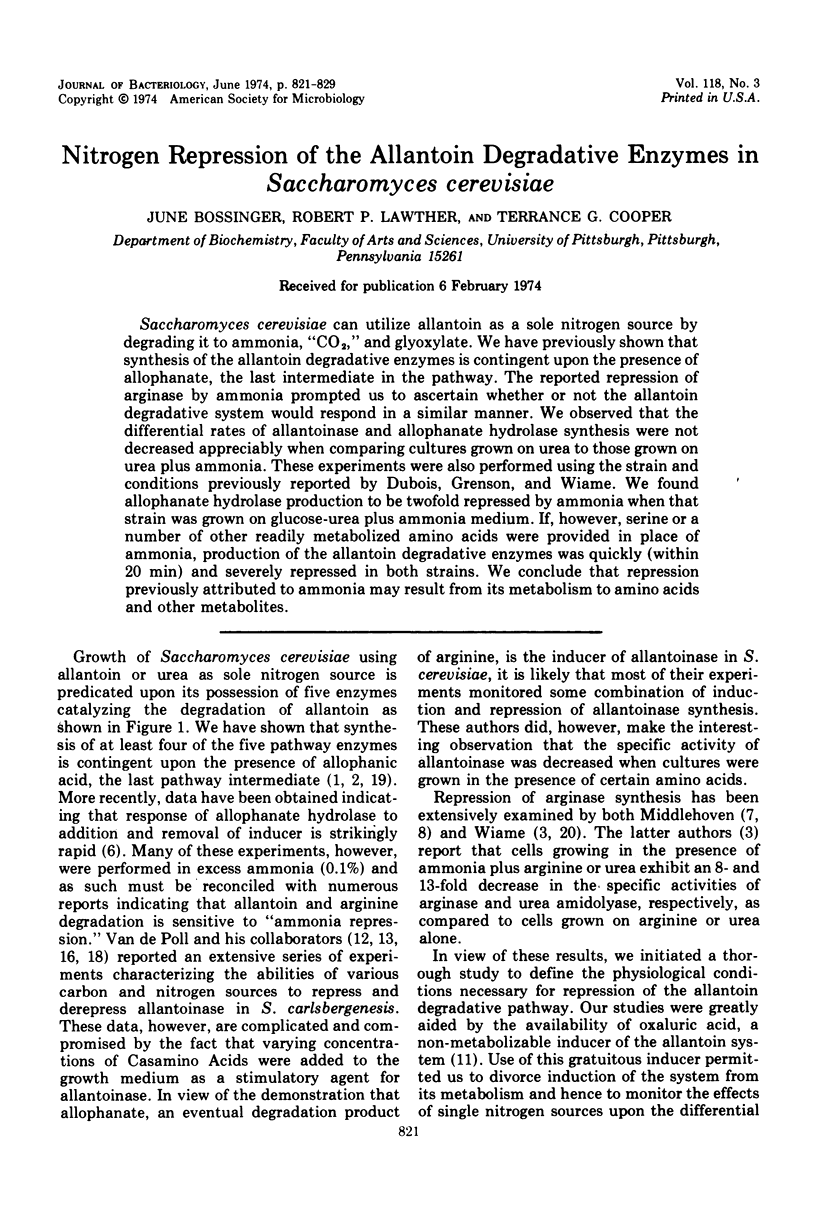
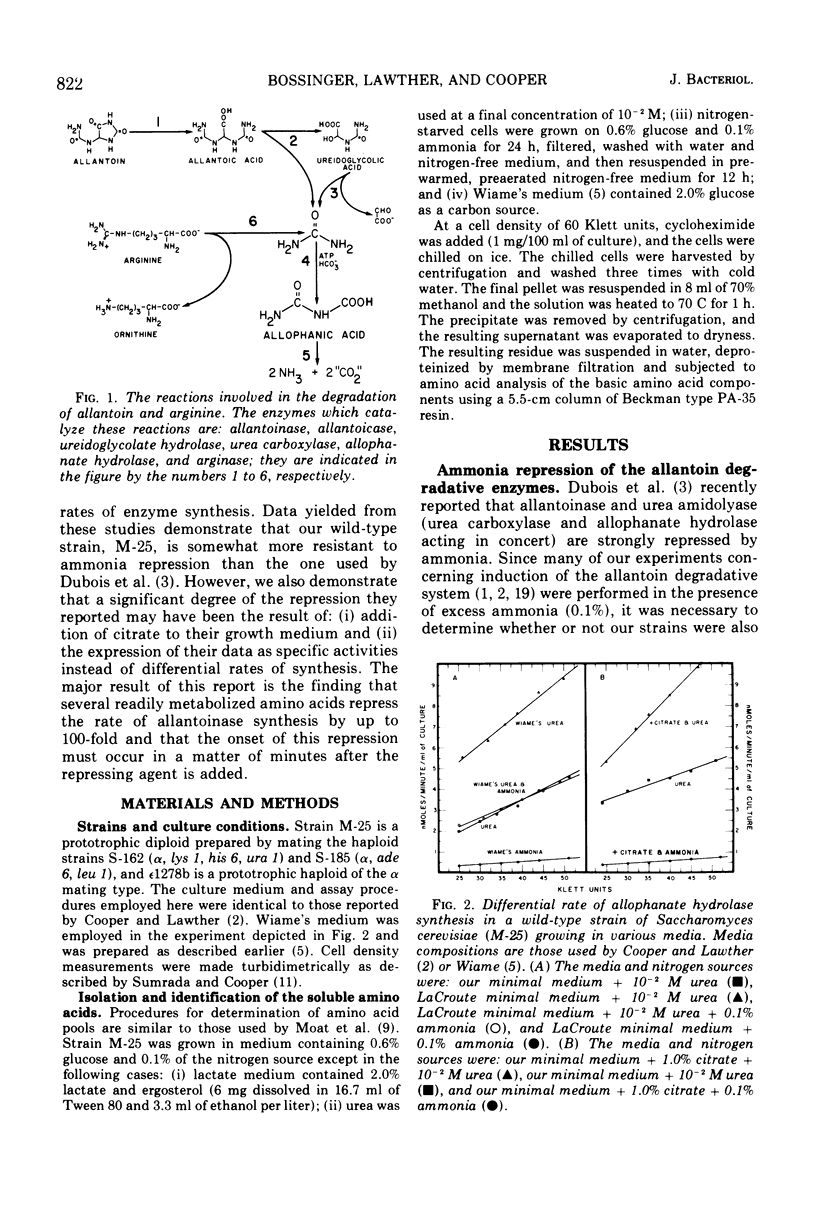
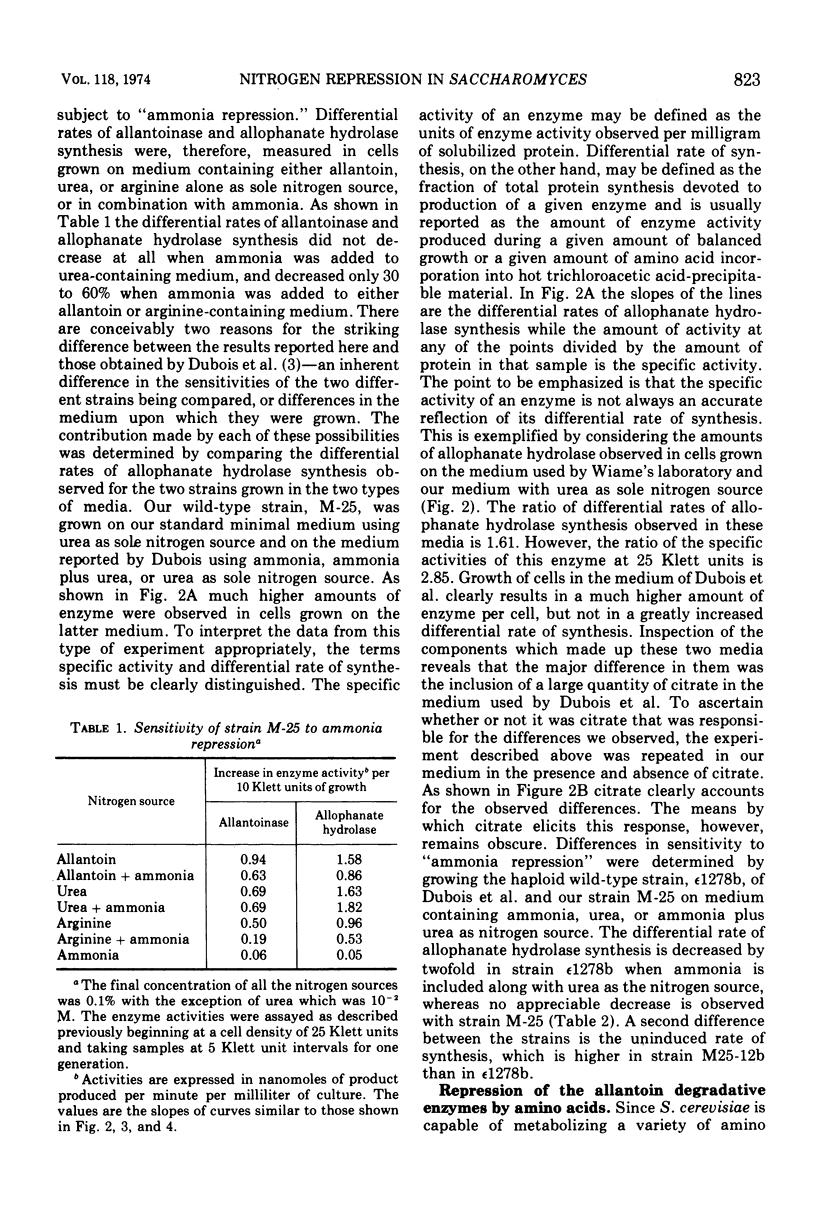
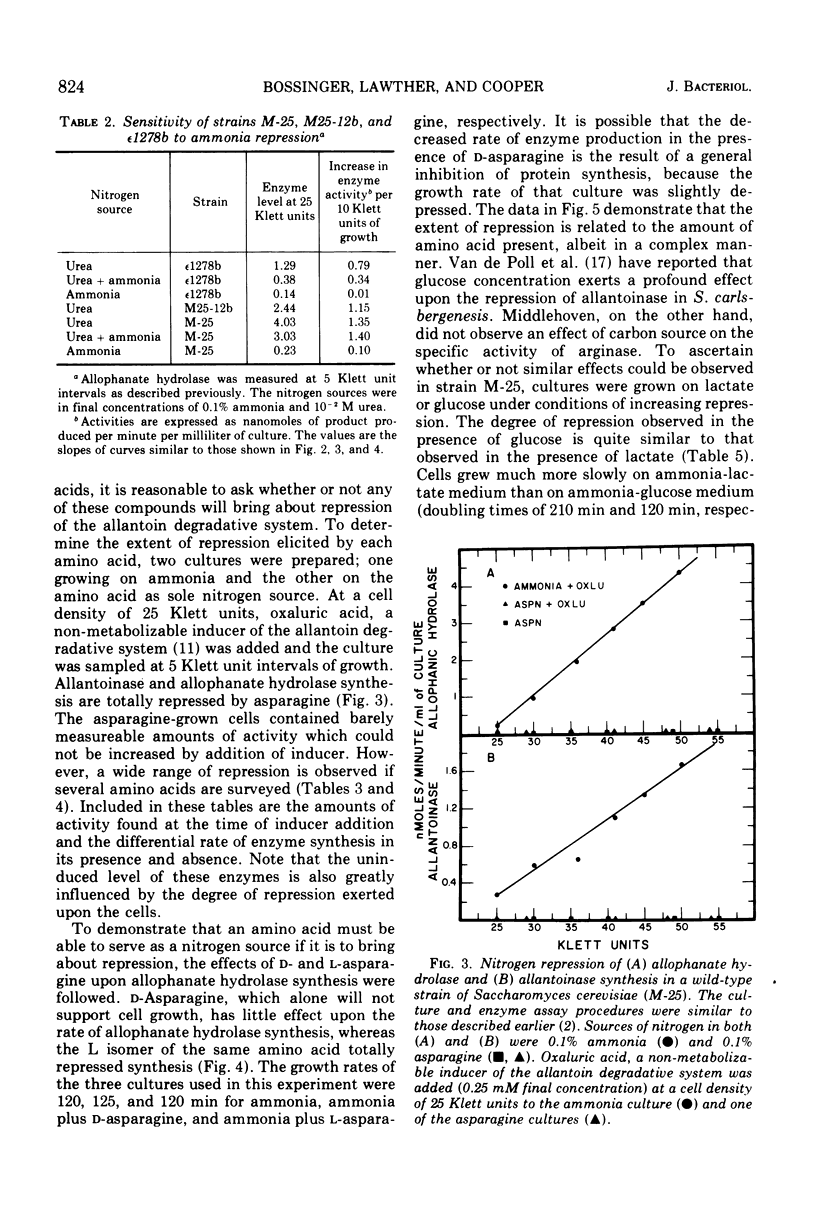
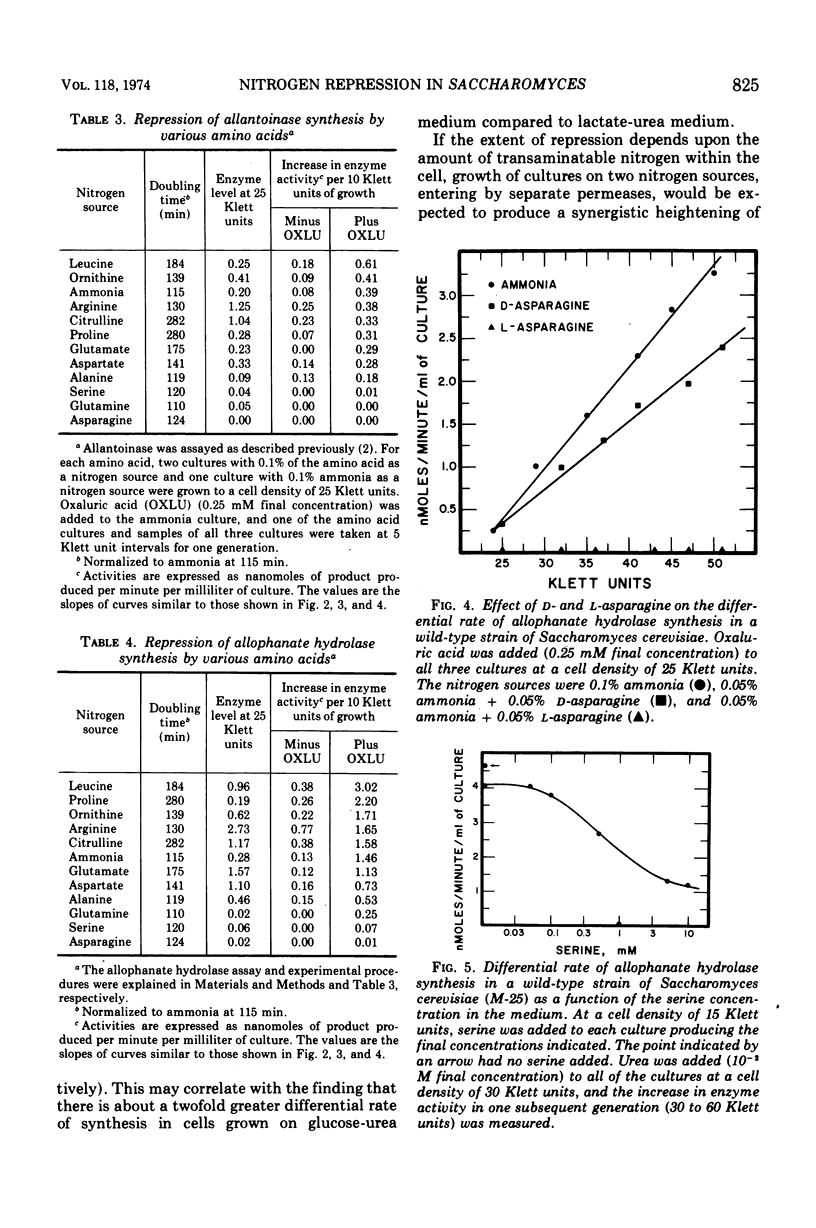
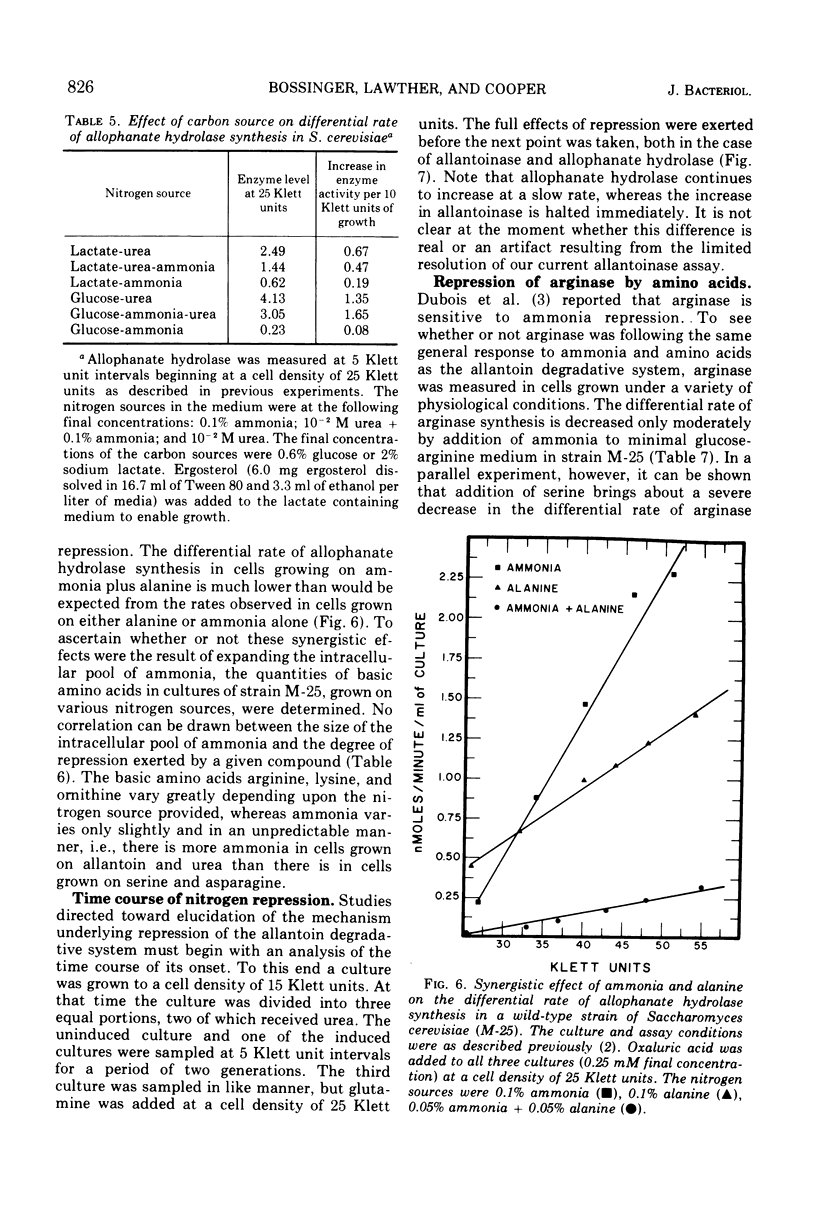
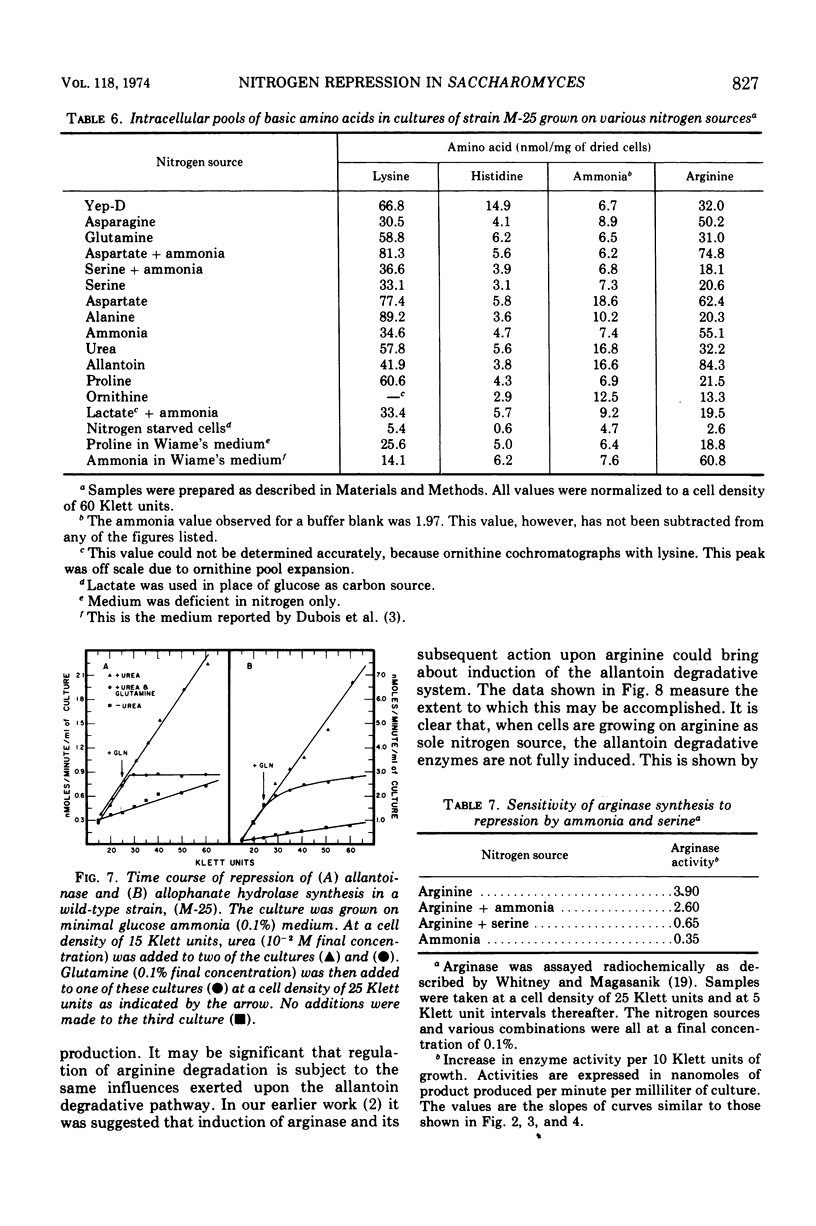
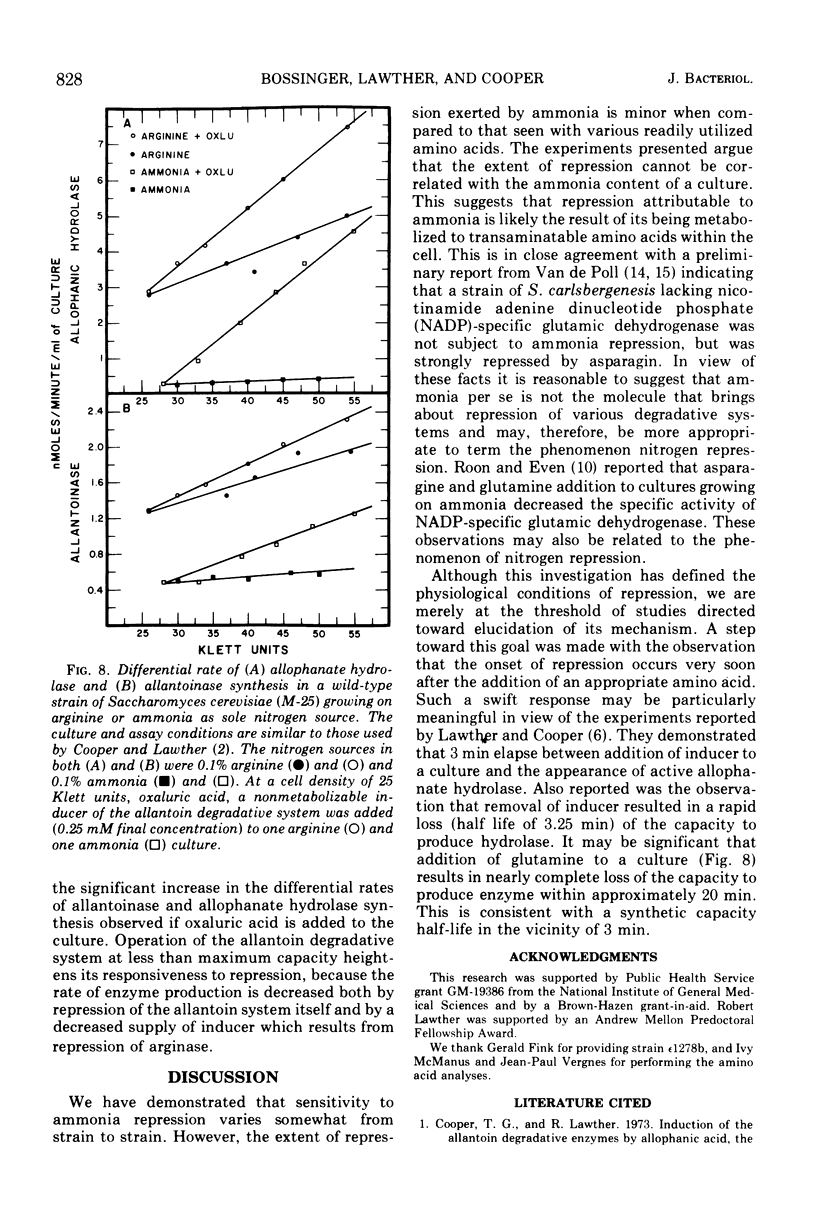
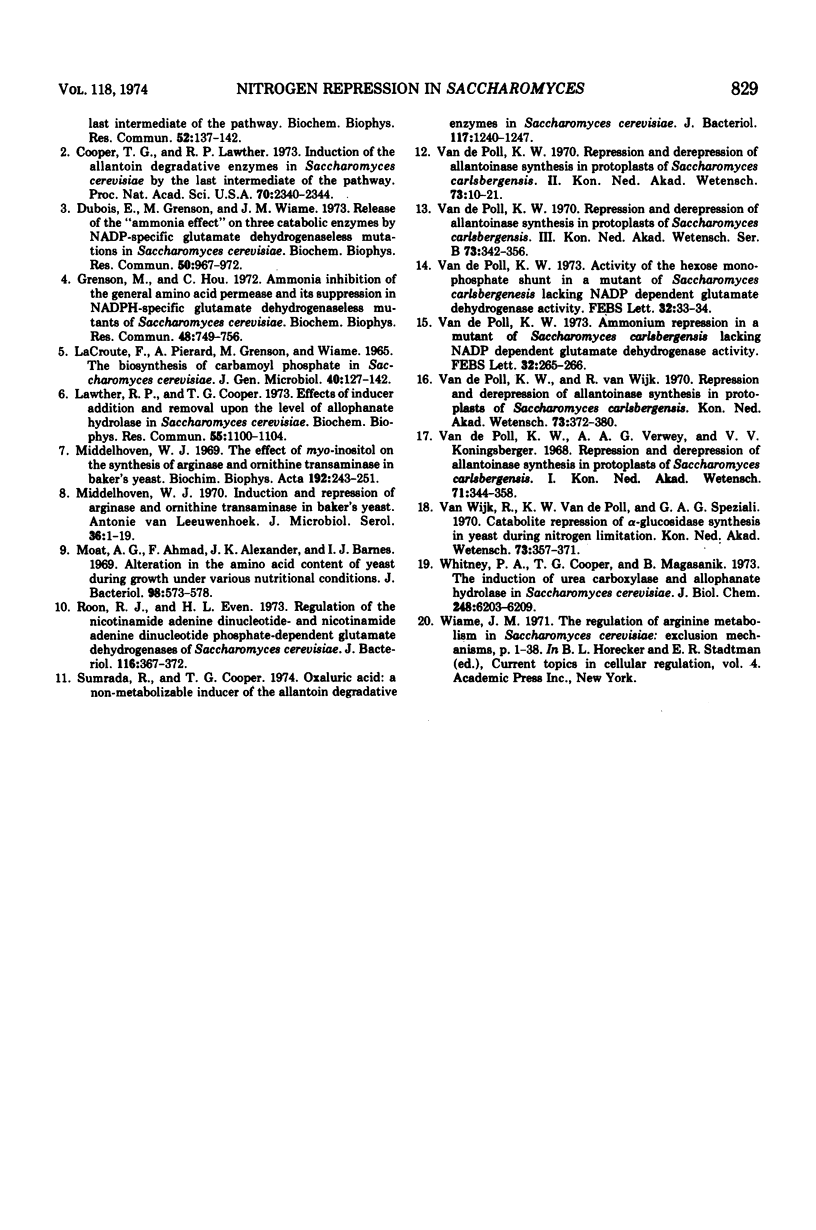
Selected References
These references are in PubMed. This may not be the complete list of references from this article.
- Cooper T. G., Lawther R. P. Induction of the allantoin degradative enzymes in Saccharomyces cerevisiae by the last intermediate of the pathway. Proc Natl Acad Sci U S A. 1973 Aug;70(8):2340–2344. doi: 10.1073/pnas.70.8.2340. [DOI] [PMC free article] [PubMed] [Google Scholar]
- Cooper T. G., Lawther R. Induction of the allantoin degradative enzymes by allophanic acid, the last intermediate of the pathway. Biochem Biophys Res Commun. 1973 May 1;52(1):137–142. doi: 10.1016/0006-291x(73)90965-0. [DOI] [PubMed] [Google Scholar]
- Dubois E., Grenson M., Wiame J. M. Release of the "ammonia effect" on three catabolic enzymes by NADP-specific glutamate dehydrogenaseless mutations in Saccharomyces cerevisiae. Biochem Biophys Res Commun. 1973 Feb 20;50(4):967–972. doi: 10.1016/0006-291x(73)91500-3. [DOI] [PubMed] [Google Scholar]
- Grenson M., Hou C. Ammonia inhibition of the general amino acid permease and its suppression in NADPH-specific glutamate dehydrogenaseless mutants of saccharomyces cerevisiae. Biochem Biophys Res Commun. 1972 Aug 21;48(4):749–756. doi: 10.1016/0006-291x(72)90670-5. [DOI] [PubMed] [Google Scholar]
- Lacroute F., Piérard A., Grenson M., Wiame J. M. The biosynthesis of carbamoyl phosphate in Saccharomyces cerevisiae. J Gen Microbiol. 1965 Jul;40(1):127–142. doi: 10.1099/00221287-40-1-127. [DOI] [PubMed] [Google Scholar]
- Lawther R. P., Cooper T. G. Effects of inducer addition and removal upon the level of allophanate hydrolase in Saccharomyces cerevisiae. Biochem Biophys Res Commun. 1973 Dec 19;55(4):1100–1104. doi: 10.1016/s0006-291x(73)80008-7. [DOI] [PubMed] [Google Scholar]
- Middelhoven W. J. Induction and repression of arginase and ornithine transaminase in baker's yeast. Antonie Van Leeuwenhoek. 1970;36(1):1–19. doi: 10.1007/BF02069003. [DOI] [PubMed] [Google Scholar]
- Middelhoven W. J. The effect of myo-inositol on the synthesis of arginase and ornithine transaminase in baker's yeast. Biochim Biophys Acta. 1969 Nov 18;192(2):243–251. doi: 10.1016/0304-4165(69)90361-4. [DOI] [PubMed] [Google Scholar]
- Moat A. G., Ahmad F., Alexander J. K., Barnes I. J. Alteration in the amino acid content of yeast during growth under various nutritional conditions. J Bacteriol. 1969 May;98(2):573–578. doi: 10.1128/jb.98.2.573-578.1969. [DOI] [PMC free article] [PubMed] [Google Scholar]
- Poll van de K. W. Activity of the hexose monophosphate shunt in a mutant of Saccharomyces carlsbergensis lacking NADP dependent glutamate dehydrogenase activity. FEBS Lett. 1973 May 15;32(1):33–34. doi: 10.1016/0014-5793(73)80729-x. [DOI] [PubMed] [Google Scholar]
- Roon R. J., Even H. L. Regulation of the nicotinamide adenine dinucleotide- and nicotinamide adenine dinucleotide phosphate-dependent glutamate dehydrogenases of Saccharomyces cerevisiae. J Bacteriol. 1973 Oct;116(1):367–372. doi: 10.1128/jb.116.1.367-372.1973. [DOI] [PMC free article] [PubMed] [Google Scholar]
- Sumrada R., Cooper T. G. Oxaluric acid: a non-metabolizable inducer of the allantoin degradative enzymes in Saccharomyces cerevisiae. J Bacteriol. 1974 Mar;117(3):1240–1247. doi: 10.1128/jb.117.3.1240-1247.1974. [DOI] [PMC free article] [PubMed] [Google Scholar]
- Whitney P. A., Cooper T. G., Magasanik B. The induction of urea carboxylase and allophanate hydrolase in Saccharomyces cerevisiae. J Biol Chem. 1973 Sep 10;248(17):6203–6209. [PubMed] [Google Scholar]
- van de Poll K. W. Ammonium repression in a mutant of Saccharomyces carlsbergensis lacking NADP dependent glutamate dehydrogenase activity. FEBS Lett. 1973 Jun 1;32(2):265–266. doi: 10.1016/0014-5793(73)80848-8. [DOI] [PubMed] [Google Scholar]


